Come join us now, and enjoy playing your beloved music and browse through great scores of every level and styles!
Can’t find the songbook you’re looking for? Please, email us at: sheetmusiclibrarypdf@gmail.com We’d like to help you!
Table of Contents
Music History Events: albums released October 23
Albums released October 23:
• 1967 – CHER – ‘With Love, Chér’

• 1970 – GENESIS – ‘Trespass’
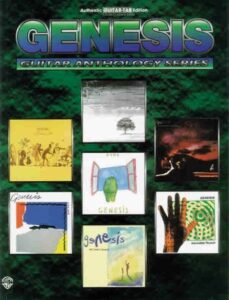
Please, subscribe to our Library.
If you are already a subscriber, please, check our NEW SCORES’ page every month for new sheet music. THANK YOU!
• 1970 – FRANK ZAPPA – ‘Chunga’s Revenge’

• 1972 – THE MOODY BLUES – ‘Seventh Sojourn’ (UK)
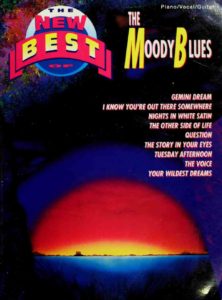
• 1972 – AL GREEN – ‘I’m Still in Love with You’

• 1979 – CABARET VOLTAIRE – ‘Mix-Up’
• 1981 – STEVE MILLER BAND – ‘Circle of Love’
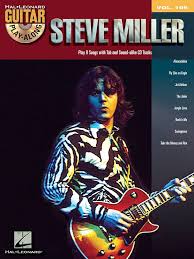
• 1981 – ELVIS COSTELLO AND THE ATTRACTIONS – ‘Almost Blue’

• 1982 – BUDGIE – ‘Deliver Us from Evil’
• 1986 – IGGY POP – ‘Blah-Blah-Blah’
• 1986 – KENNY ROGERS – ‘They Don’t Make Them Like They Used To’
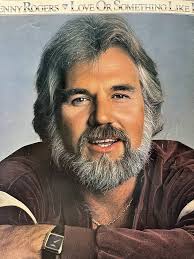
• 1986 – POINTER SISTERS – ‘Hot Together’
• 1989 – BEAUTIFUL SOUTH – ‘Welcome to the Beautiful South’
• 1989 – CURIOSITY KILLED THE CAT – ‘Getahead’
• 1989 – ROY ORBISON AND FRIENDS – ‘A Black & White Night Live’

• 1989 – SANANDA MAITREYA (TERENCE TRENT D’ARBY) – ‘Neither Fish nor Flesh’
• 1989 – CONGRESO – ‘Para Los Arqueólogos Del Futuro’
• 1990 – KINGS’ X – ‘Faith Hope Love’
• 1991 – NEIL YOUNG & CRAZY HORSE – ‘Weld’
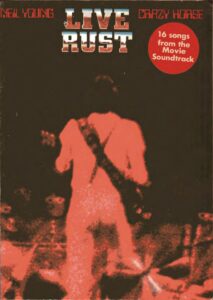
• 1994 – FOREIGNER – ‘Mr. Moonlight’

• 1995 – THE SMASHING PUMPKINS – ‘Mellon Collie and the Infinite Sadness’
• 1995 – OZZY OSBOURNE – ‘Ozzmosis’
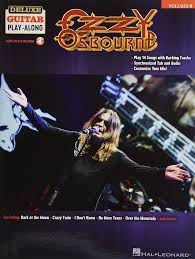
• 1995 – DEF LEPPARD – ‘Vault: Def Leppard Greatest Hits (1980–1995)’
• 1995 – ROXETTE – ‘Don’t Bore Us, Get to the Chorus!’
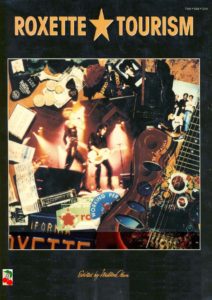
• 1995 – ANATHEMA – ‘The Silent Enigma’
• 1996 – AYREON – ‘Actual Fantasy’
• 2000 – THE DOORS – ‘Live in Detroit’
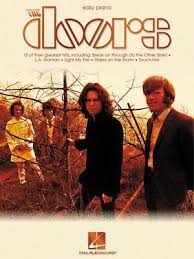
• 2000 – ERASURE – ‘Loveboat’
• 2000 – TEENAGE FANCLUB – ‘Howdy!’
• 2001 – GOV’T MULE – ‘The Deep End, Volume 1’
• 2001 – BUSH – ‘Golden State’
• 2001 – RANDY NEWMAN / BSO – ‘Monsters, Inc.’
• 2001 – INCUBUS – ‘Morning View’
• 2001 – BACKSTREET BOYS – ‘The Hits – Chapter One’
• 2001 – HARRY CONNICK JR. – ’30’
• 2001 – HARRY CONNICK JR. – ‘Songs I Heard’
• 2001 – ZOÉ – ‘Zoé’
• 2001 – GODFLESH – ‘Hymns’
• 2001 – HOPE SANDOVAL & THE WARM INVENTIONS – ‘Bavarian Fruit Bread’ (USA)
• 2003 – LOS BUNKERS – ‘La culpa’
• 2006 – MY CHEMICAL ROMANCE – ‘The Black Parade’ (EUR)
• 2006 – ROBBIE WILLIAMS – ‘Rudebox’

• 2006 – SUNN O))) & BORIS – ‘Altar’
• 2007 – ROBERT PLANT AND ALISON KRAUSS – ‘Raising Sand’
• 2007 – NEIL YOUNG – ‘Chrome Dreams II’
• 2007 – DWIGHT YOAKAM – ‘Dwight Sings Buck’
• 2007 – SERJ TANKIAN – ‘Elect the Dead’
• 2007 – HAMMERFALL – ‘Steel Meets Steel: Ten Years of Glory’
• 2007 – LOVERBOY – ‘Just Getting Started’
• 2007 – COHEED AND CAMBRA – ‘Good Apollo, I’m Burning Star IV, Volume Two: No World for Tomorrow’
• 2007 – LIQUID TRIO EXPERIMENT – ‘Spontaneous Combustion’
• 2007 – SAY ANYTHING – ‘In Defense of the Genre’
• 2009 – TRANSATLANTIC – ‘The Whirlwind’
• 2009 – WOLFMOTHER – ‘Cosmic Egg’ (AUS)
• 2009 – BABYLON BOMBS – ‘Babylon’s Burning’
• 2012 – BILLY RAY CYRUS – ‘Change My Mind’
• 2012 – SISTER SIN – ‘Now and Forever’
• 2015 – CHRIS ISAAK – ‘First Comes the Night’ (AUS)
• 2015 – 5 SECONDS OF SUMMER – ‘Sounds Good Feels Good’
• 2015 – KILLING JOKE – ‘Pylon’
• 2015 – ROD STEWART – ‘Another Country’
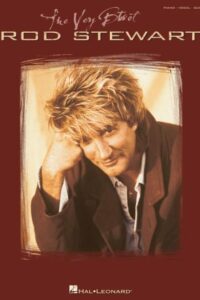
• 2015 – DAVE GAHAN AND SOULSAVERS – ‘Angels & Ghosts’
• 2015 – GAZPACHO – ‘Molok’
• 2015 – GRAVE DIGGER – ‘Exhumation (The Early Years)’
• 2020 – BRUCE SPRINGSTEEN – ‘Letter To You’
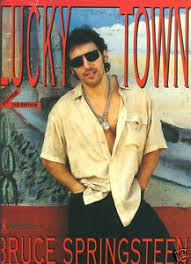
• 2020 – BEN HARPER – ‘Winter Is for Lovers’
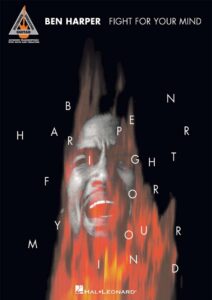
• 2020 – FAITHLESS – ‘All Blessed’
• 2020 – JOE BONAMASSA – ‘Royal Tea’
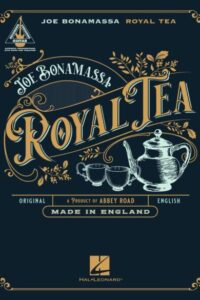
• 2020 – SEVENDUST – ‘Blood & Stone’
• 2020 – GORILLAZ – ‘Song Machine, Season One: Strange Timez’
• 2020 – LEAVES’ EYES – ‘The Last Viking’
• 2020 – JEFF TWEEDY – ‘Love Is the King’
Best Sheet Music download from our Library.
Search your favorite sheet music in the Sheet Music Catalog
Browse in the Library:
Or browse in the categories menus & download the Library Catalog PDF:
Toshio Hosokawa
Today is the 70th birthday of Japanese composer Toshio Hosokawa, born in Hiroshima. In 1976 he travelled to West Berlin to study piano with Rolf Kuhnert and music theory with Witold Szalonek at the Hochschule der Künste. (University of the Arts)
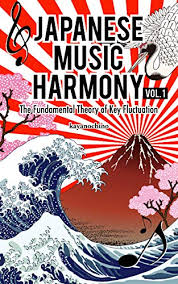
In 1980, he participated for the first time in the International Summer Courses of New Music in Darmstadt. Since then his works have been performed throughout Europe and Japan, acquiring an international reputation. A recipient of numerous awards, Hosokawa has received the First Prize of the Berlin Philharmonic’s Centenary Composition Competition (1982), the Arion Prize (1984), the Kyoto Prize (1988), the Rheingau Prize (1998) and the Duisburg Prize (1998), as well as the ARD and BMW AG Living Music Prize (2001). In 2001 he was appointed a member of the Berlin Academy of the Arts.
Hosokawa has been invited, as a composer and teacher, to practically all the major contemporary music festivals, and especially: Darmstadt International Summer Courses of New Music, Venice Biennale, Munich Biennale, International Summer Academy of the Mozarteum Salzburg, Lucerne International Weeks, Munich Live Music, Schwaz Klangspuren, Helsinki Nova Music, Centre Acanthes in Villeneuve-lès-Avignon and Autumn in Warsaw.
Since 2001 Hosokawa has been music director of the Takefu International Music Festival and since 2004 a visiting professor at the Tokyo College of Music. He has been “composer in residence” of the DSO Berlin in the 2006/2007 season and of the WDR Rundfunkchor Köln in 2006-2008. Hosokawa has also been a fellow of the Wissenschaftskolleg zu Berlin in the 2006/2007 and 2008/2009 seasons.
Under forms of European breath, Hosokawa”s work pulsates Japanese traditions understood in a lively and dynamic way. The meter of his poetry, the calligraphy from the initial gesture and energy to the last stroke, the dichotomy between sound and silence, Zen, the spirit of “Nô” theater and the use of Japanese instruments such as the “koto” or the “shô”, come together in a music that sprouts, expands and folds in on itself as if it were a living being, sound nature impregnated with the vaporous mist of the Japanese forests.
From a young age he was fascinated by contemporary Western creation and moved to Europe to study with Ysang Yun and Klaus Huber. It was the Korean who urged him to discover the traditional music of his native country, in which he had not felt much interest until then. In addition to Yun, he is indebted to two other essential figures: his most illustrious Japanese predecessor, Toru Takemitsu and his close friend Helmut Lachenmann. “Music must aspire to the elevated”; with these words Toshio Hosokawa explained in an interview his desire to move away from the aesthetics of other composers. The truth is that in their own country, Japanese classical music has been limited to a functional aspect, being performed only during religious festivities in temples or in marriage ceremonies: it was therefore a ceremonial music that would make its first entry into the musical universe, on the occasion of official acts, in foreign countries. For a long time this way would be inaccessible to him in Japan, where because of its status as music of the imperial court it was intended only for the emperor, hidden behind the walls of the palace and far from the ears of the people.
The elements that Hosokawa has taken from the “gagaku” for his own musical expression are first of all the stroke, of great solemnity, but also certain rhythmic figures such as the accelerated pulse of the “kakko” drum or the generally heterophonic structure of his musical language: the harmonic ranges, long sustained, are thus individually “established” by the different orchestral voices; or in other words, each instrument unfolds its own lines according to a limited catalog of sonorities, valid for everyone. If homophony were represented by the vertical and polyphony by the horizontal, Hosokawa”s heterophonic method would be represented exactly by the diagonal.
In these soundscapes, which are therefore devoid of evolution, Hosokawa does not fail to explore a surprising diversity, revealing an extremely simple methodology.
Hosokawa”s ability to transform the scarce into the abundant hides, on the one hand, his great mastery of Western compositional techniques and, on the other, his roots in that Japanese culture of simplicity, purity and even poverty. Let us provide an example: when the three upper and three lower notes of a chord are permuted by an inverted octave and this simple procedure creates a new type of tension, generating an original harmonic field that provides unprecedented access to a new universe of signs and a sound richness of unsuspected variety, it is clearly shown to us, So, that this music does not want anything, that it does not “pursue” anything and that it does not aspire to anything. A music coherent with itself, with its own beauty. And of course, with its own feeling of elevation.
It is no coincidence that the concerto for flute and orchestra “Per-Sonare” (1988) is Hosokawa”s first composition for solo instrument and orchestra; The flute is the only European instrument whose sonorities could be compared to some extent with those of its Japanese equivalent. It can clearly be perceived that the sound of the “shakuhachi” (bamboo flute) has inspired this music with its cracked, often noisy sonorities, in which the sound of the instrument and the breath of the breath merge: “per-sonare”.
The Japanese composer recreates the experience of his parents and neighbors before the explosion of the atomic bomb, in “Hiroshima Requiem”, (1989 and 1991). “Death and Resurrection” recently updated the score with a new version. According to Hosokawa: “The atomic bomb was an event against nature. It is horrifying that human beings made such a monster. A monster like Fukushima that, by the way, we used while it was working. I”m interested in how you can live in harmony with nature, that”s why I composed those pieces. It is not a political statement, but a way of expressing my rejection of these facts. And yes, it”s still early days, but in the future I”ll write something about what just happened in my country.”
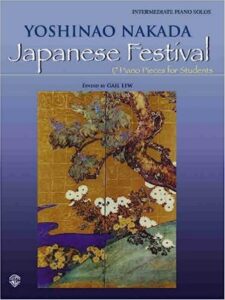
The concept of sound as landscape has given the 1993 harp and string quartet concerto its title, “Landscape II” (1992), which is part of a cycle of compositions for different instrumental combinations. The simplicity of the techniques evoked seems evident – even though the way in which the composer, by resorting to this simplicity, finds all kinds of solutions is also evident. The elements are mainly reduced to two different sound gestures: a horizontal/diagonal continuum in the generally lower dynamic zone and vertical cuts, extremely powerful and high-pitched, reminiscent of rough rocks standing out against a landscape of soft reliefs. Hosokawa has carefully studied the conjunction of such sound gestures in a series of chamber works, “Vertical Time Studies”.
The piano concerto “Ans Meer” was premiered in 1999 on the occasion of the presentation of the Duisburg Music Prize to Hosokawa; the work is dedicated to the pianist Bernhard Wambach. The work takes up and adapts an earlier one, the “Concerto for saxophone and orchestra” (1998), in which the composer brings together the aforementioned sound gestures within a repertoire of piano techniques. Hosokawa was inspired by the pictorial work “Monk by the Sea”, by Caspar David Friedrich to compose this concerto. The orchestra should be arranged with the string section, harp and percussion on the left, while the woodwind and brass sections are placed on the right. The sound moves from one side to the other, like waves, according to the composer”s words.
His compositions include works for orchestra, chamber music concerts, music for traditional Japanese instruments, film soundtracks, operas.
Obras destacadas:
Operas
– “Vision of Lear” (1988)
– “Hanjo” (2004)
– “Matsukaze” (2011)
– “Stilles Meer” (2016)
– “Erdbeben. Träume” (2018)
Oratorios
– “Voiceless Voice in Hiroshima” para solistas, narradores, coro y orquesta (1989/2001)
Orchestra and Chamber Music
– “Banka, para voz y jûshichigen” (1989)
– “Nocturne”, para “jûshichigen” (koto de 17 cuerdas) (1982)
– “Ferne Landschaft” (1987)
– “Memory” (1996), cello and piano, which is perhaps Hosokawa’s best known. The subtitle “To the memory of Isang Yun\
– “Silent Flowers” for string quartet (1998)
– “Clarinet Concerto” (2000)
– “Deep Silence” (2002), Duets for “sho” and accordion including:
• “Cloudscapes – Moon Night”
• “After a drawing of Rudolf Steiner”
• “Sen V”
– “Circulating ocean” for orchestra, (2005) 1/2, 2/2
– “Moment of Blossoming” for trumpet and orchestra (2007) (Berliner Philharmoniker, dir. Simon Rattle)
-“X-Journey” (for “shakuhachi”), created in June 2009 as part of the MusikFabrik Bachfest Leipzig Festival.
– “Ave María”
– “Canto, for cello and orchestra” premiered in April 2009 in Cologne.
– “Für Walter” for soprano, saxophone, piano and percussion (2010)
– “Sublimation for cello and orchestra” (2016)
– “Weaving Song for String Quartet” (2020)
Browse in the Library:
Or browse in the categories menus & download the Library Catalog PDF:
